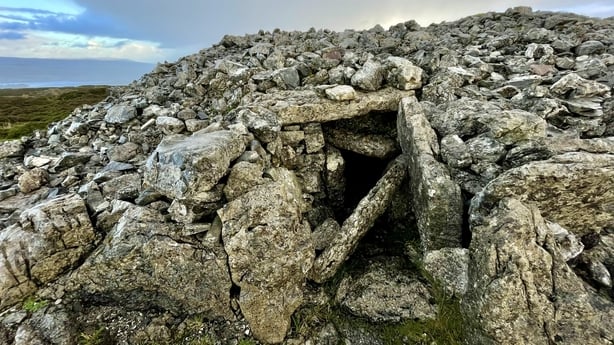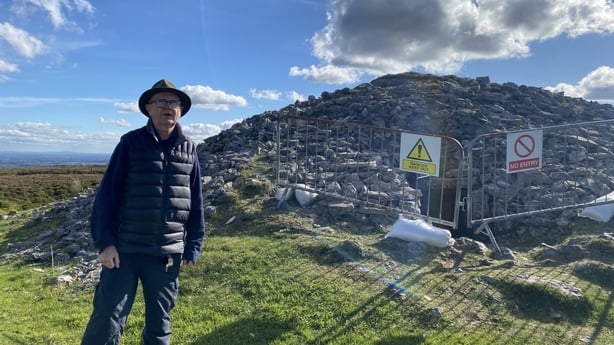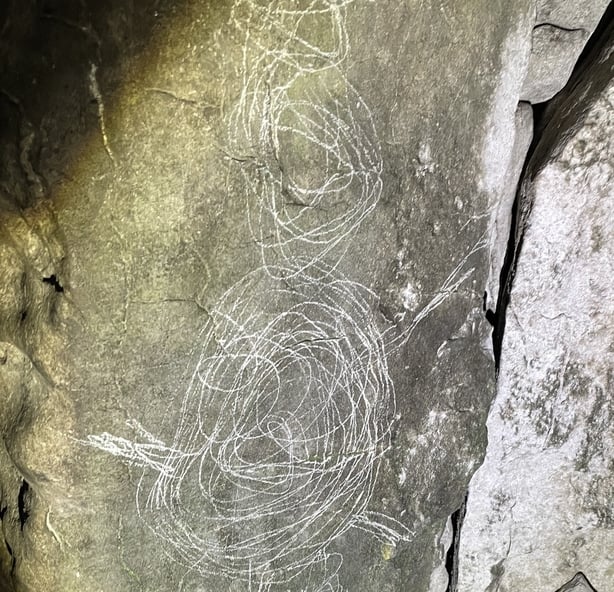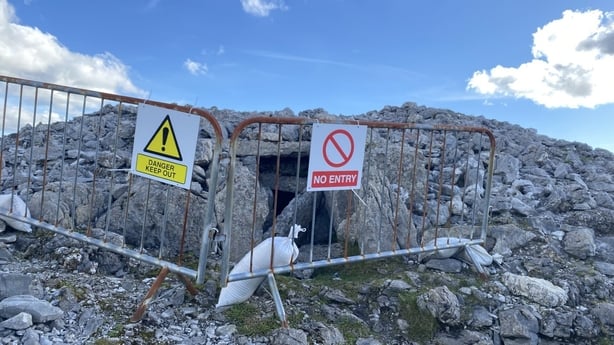Gardaí have confirmed they are investigating an incident of criminal damage at an ancient neolithic passage tomb in Co Sligo.
A technical examination of the scene has been carried out by the garda divisional scenes of crime unit and investigations are ongoing.
Photographer Ken Williams visited the historical site at Carrowkeel over the weekend and took photographs of words and shapes scratched into stones at the tomb which is over 5,000 years old.
Mr Williams, who regularly photographs at archaeological sites, said it was the worst he had ever seen and that he reported the vandalism to gardaí and the NMS.
Access to the monuments was closed by the Office of Public Works (OPW) today to allow for investigations by the OPW, the National Monuments Service (NMS) and gardaí.
Mr Williams said that nine stones in total and 11 surfaces had been carved into.
He said that the passage tomb where he found the markings in is very awkward to get to and you would have to get on your hands and knees to crawl into it.

The NMS said in a statement that the etching of extensive graffiti across various architectural stones of a number of the passage tombs is being treated very seriously as is the apparent collapse of an entrance stone to one of the tombs.
"Such interference is a serious offence and can lead to significant penalties being imposed," it said.
Sligo County Council said it was dismayed at the "mindless vandalism at the site".
It said: "The cairns at Carrowkeel are the final resting places of early neolithic farmers and it is shocking that anyone would think it appropriate to damage these sites left by our ancestors over 5,000 years ago.
"These monuments are fragile and need to be protected and treated with respect."
The council has strongly supported the efforts to have the county's neolithic landscape placed on the UNESCO World Heritage list.
Speaking on RTÉ's News at One, Michael MacDonagh, Chief Archaeologist with the National Monuments Service, said the "damage is significant".
He said: "From the information that is being provided to us, it is one of the most significant incidences of such graffiti vandalism, which is increasing, unfortunately, that we have seen on any of our national monuments in recent years."
Mr McDonagh said the NMS had seen an increase in vandalism. But, added that an uptick in reporting and the use of social media is a contributing factor.
"But sadly, I think it is fair to say we are seeing an increase in the incidents of graffiti, but etching and also painted," he added.

Padraig Meehan, of the Sligo Neolithic Landscapes group, described the damage as "heartbreaking and very sad".
He said incidents of vandalism at such sites have increased.
The group, of which Mr Meehan is chair, was formed in 2015 in recognition of the threats to the unique neolithic monuments and landscapes of Co Sligo.

Mr Meehan said that Carrowkeel does not have a visitor centre and is very much in the wilderness and in that sense is vulnerable.
He said that the group depend on the goodwill of people to protect sites like this.
In July last year the Government announced that the Passage Tomb Landscape of Sligo, which includes Carrowkeel, was on Ireland's World Heritage Tentative List for consideration as a UNESCO World Heritage site.
It described the passage tomb landscape in the county as representing "the most westerly and one of the most dramatic expressions of a remarkable flourishing of the construction of ritual monuments across Europe between five and six millennia ago".

Mr Meehan added that the Sligo Neolithic Landscapes group believes that the best way to preserve monuments in the long term is to have an integrated plan, a protection plan, and that is key to the process of application for world heritage status.
Acknowledging that the "vast amount of visitors to archaeological monuments are very respectful of the", both the OPW and NMS said that a joint- project, 'Project Our Past', campaign urges visitors to be mindful of their actions when visiting heritage sites.
Carrowkeel is a megalithic hill top passage tomb cemetery with 15 cairns in the Bricklieve mountains in south Sligo.







